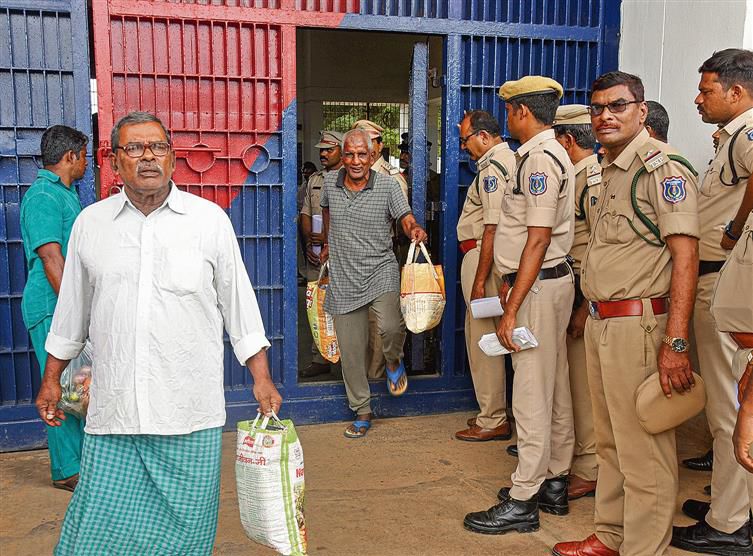Community service offers a window of opportunity
THE new criminal laws have come into force. The Bharatiya Nyaya Sanhita (BNS), the Bharatiya Nagarik Suraksha Sanhita and the Bharatiya Sakshya Adhiniyam have replaced the Indian Penal Code (1860), the Criminal Procedure Code (1973) and the Indian Evidence Act (1872), respectively. The transition will be very challenging for all stakeholders. Some teething troubles are bound to happen as the police and the judiciary will have to juggle the two systems of law.
The new statutes are aimed at providing justice in contrast to colonial legislation, which focused on ‘punishment’. A progressive shift under the BNS is the introduction of community service as a form of punishment under Section 4(f). The BNS, however, does not define what community service entails. This will apply to six offences: attempting suicide to compel or restrain the exercise of lawful power, defamation, theft of property below Rs 5,000, misconduct in public by a drunken person, non-appearance at the specified place and time as required by a proclamation, and a public servant engaging in trade. The community service sentence can be awarded in addition to the prescribed punishment. This legislative change provides an alternative to imprisonment and reflects a rehabilitative approach.
Community service, as ordered by the court, offers the offender the opportunity of compensating society for the wrong s/he has done by performing unpaid work for the benefit of the community instead of going to prison. A proportionate use of imprisonment is essential for an effective penal system. India has over 5.73 lakh inmates in its 1,330 prisons, with an occupancy rate of 130 per cent. Undertrials constitute 75 per cent of the prison population. Not every suspect needs to be imprisoned. Non-custodial measures and, in particular, community service as a penal sanction are also in line with the United Nations Rules for Non-Custodial measures (The Tokyo Rules) of 1990. Positive experience with the introduction of community service has been seen in many countries across the world, including the UK, the US, Australia and African nations such as South Africa and Zimbabwe. This sanction is based on the restorative and rehabilitative justice models, which hold offenders directly responsible for the damage they have caused to society.
The key objective of community service is to promote among offenders a sense of responsibility towards society. Who will implement this judicial decision and the manner of its implementation remain a bit unclear as of now. Community service orders must be correctly worded in order to avoid possible confusion. The orders must specify the number of hours required to be worked; the days on which work is to be performed; the starting and finishing times of the work; and the place where the work is to be performed.
The work and the supervision required need to be specified. Hence, having detailed provisions is essential for successfully implementing this provision. Staff will have to be trained for the supervisory work as well. Will it be probation officers, the social welfare department, the prison department or community service supervisors who will oversee it? These issues need to be resolved promptly.
In India, it was only under the Juvenile Justice Act, 2015, that community sentence could be given. The judges and Juvenile Justice Board members have not always been clear in terms of what kind of sentence should be passed. The Pune Porsche accident case is a notable example of how one order can spark a legal debate on the appropriateness and arbitrariness of such a measure. Hence, having clear guidelines is very essential.
This promising step requires careful planning for its successful implementation. Identifying the community work, places for work and the supervision and monitoring agencies in any state is a task for the governments, along with capacity building and training of relevant stakeholders. There are international best practices in this regard that can be considered.
Community service in Spain and Singapore requires that the work should have some relation with the offence committed. The number of work hours varies — a range of hours is specified. Work like cleaning public areas, tree plantation, maintaining public parks and buildings may also be ordered. Centres of community service can include government hospitals, health clinics, schools, orphanages and old-age homes, along with charitable organisations like Pingalwara. Sewa is an essential component of our culture; in the Sikh religion, the one who is declared tankhaiya is ordered to do kar sewa as penance and is then accepted back into the community.
John Braithwaite, a criminologist, argues in favour of the ‘reintegrative shaming’ approach, which eschews stigmatisation to deal with the crime problem. The reintegrative process involves a reciprocal relationship between the offender and the community.
In certain jurisdictions, community sentencing is monitored by specifically established boards/institutions. A breach of the community sentence can be dealt with through a fine, an increase in the hours of work or sending back the offender to prison. The role of the supervisor is important, as it involves monitoring the offenders’ work, ensuring compliance with the sentencing order and reporting back to the court.
This sanction helps an offender make reparation for offences and can enhance self-respect. Community service projects can also empower communities as the offenders engage in community-building service endeavours. There are many possibilities for better designing the sentencing landscape. Successful implementation of the new laws can happen only when all stakeholders and the community come together and work in tandem. Knowing the direction where we are going becomes important for all agencies.
Views are personal









